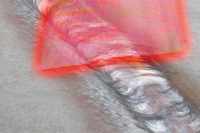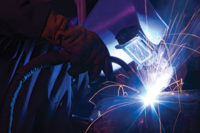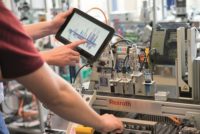Before the advent of the consumer GPS, a driver had the instrumentation of the car dash. While useful, it did not provide information about direction, time of travel, or time to destination. The GPS changed the way we drive. It is a feedback mechanism to make our driving more efficient, avoid problems, take corrective action and make better decisions. Like the GPS, weld and process monitoring accomplishes the same thing. One can look at the dials and gages on the welding equipment, but having the monitoring in place gives an overlord assistance to the users to make better decisions.
There are many variables that make up a good weld. At a high level, it seems simple enough with the right recipe of gas, volts, amps, speed and heat, a good weld is expected. Yet, we hear time and time again of weld related issues and there are encyclopedias of information and research towards quality welding and weld related defects.
Weld and process monitoring is a combination of measuring and monitoring weld conditions and at the same time measuring and monitoring the additional factors that make up a quality weld. Together, they provide a 360 view of the conditions in which the parts were fabricated. Together, it is a proactive strategy vs. a company being reactive. Together, they allow quality assurance personnel, supervisors and managers to look for patterns, differences and anomalies. This type of work is instrumental in tuning the process and in doing so it makes the process efficient. Every manufacturer is concerned about yield and first time right time principles. We exist in a competitive landscape and for some industries profit can swing to loss in a matter of hours.
Knowledge is Powerful
In today’s industrial landscape there are more experienced qualified personnel leaving or retiring than there are entering the industry. Experience and accumulated knowledge is not easily transferred, as good as it sounds. We have all heard the expression, “I’ve seen it 1,000 times before.” In statistics, 1,000 is a statistical sample population in which a distribution curve with standard probabilities can be reliably created. Meaning, if one took 10,000 samples, they would get the same distribution curve. Having a monitoring strategy in place builds redundancy, learning and a library in which the next wave of workers can refer to and learn from. What a company creates is a historian such that over the sequence of 1,000 occurrences what will converge is a statistical probability of why it happened, under which conditions and what the corrective action was. Without this in place, it is the same as driving without a GPS.
In Control
This monitoring system used a laser based technology to monitor the surface properties of the weld. What is charted is weld bead height to weld bead width. These charts are telling a story. In the above chart, one can see a cluster of data points. In the lower chart, there is no discernable pattern. The difference is because of the following reason:
The upper chart is from a manufacturer that has been using the weld monitoring system for six months. In this time, they have used the system to tune their process. They now have a clear understanding that if the weld shape properties are in the cluster of data, the probability of a quality weld is very high. They have used the historian as their GPS, to increase yield and efficiency. Can we assume that their profitability has also gone up? I think this is a safe assumption.
In comparison, the lower chart is from a new client that does not have any monitoring system whatsoever. This data was collected over a four-hour period and one can see that the process is not in control. In fact during this four hour period there were three mill stoppages. Mill run rates are $2,500 per hour today plus the loss from scrap.
Defects Happen
In a perfect world and scenario, there are no defects. For the welding industry, with the many variables that impact welding, this is hard to accomplish.
What the system identifies is changes in the weld shape and sends alerts to the production line. This is from a continuous production line. One can see the squeeze out on the right hand side, but no squeeze out on the left. The producer wasn’t sure of the origin of this disturbance. A suggestion was put forth to check if their material was riding high on one side and if they were putting too much pressure. The conclusion was correct and they made adjustments to their fin passes. This example illustrates the power of bringing information directly to the user in real time and to the historian. The historian has captured this information and it now becomes knowledge that can be accessed for everyone.
Tying it Together
In the before mentioned examples, they illustrated the point of importance and value of monitoring the weld and process to bring your production in control and understand process behavior when it happens. The eclipse of monitoring weld and process is when one can tie the two together. I can best illustrate this with another example. This is a system that expands the scope of monitoring to include the input parameters of welding (Volts, Amps, Gas, Frequency). From these input parameters, the system also calculates and monitors Power, V:A, Heat Input. There are three control charts presented.
The root cause is for the client to determine. Since this information is now part of the historian, maintenance can investigate to arrive to a conclusion.
This is a clear defect and is classified as a cold weld, pasty weld, lack of fusion. The company now has a record of a condition in which a cold weld happens. With all of the things an operator needs to check, they did not see this happen. The weld and process monitoring system did however see this. What this example is attempting to illustrate is the fact that while it is good to monitor only the process variable or only weld data for inspection, monitoring both is far more powerful and informative. The combined pieces of the puzzle allow for proactive decisions to be made.
Traceability
Today, customers are asking for vendors to be more compliant, have more information and have answers as to why they received parts with weld defects. When a client calls and a company can produce a report in a matter of minutes about the parameters surrounding their production run, don’t you think the client will be relieved that their upstream supplier is proactive and on top of their process? We know the answer to this question.
Today, to be competitive, it is not enough to sell your goods at a lower price than the next competitor. Price does not cut the grain any longer. Clients want peace of mind and in the end a company is a collection of people. The people that you serve want to know you are in control.














